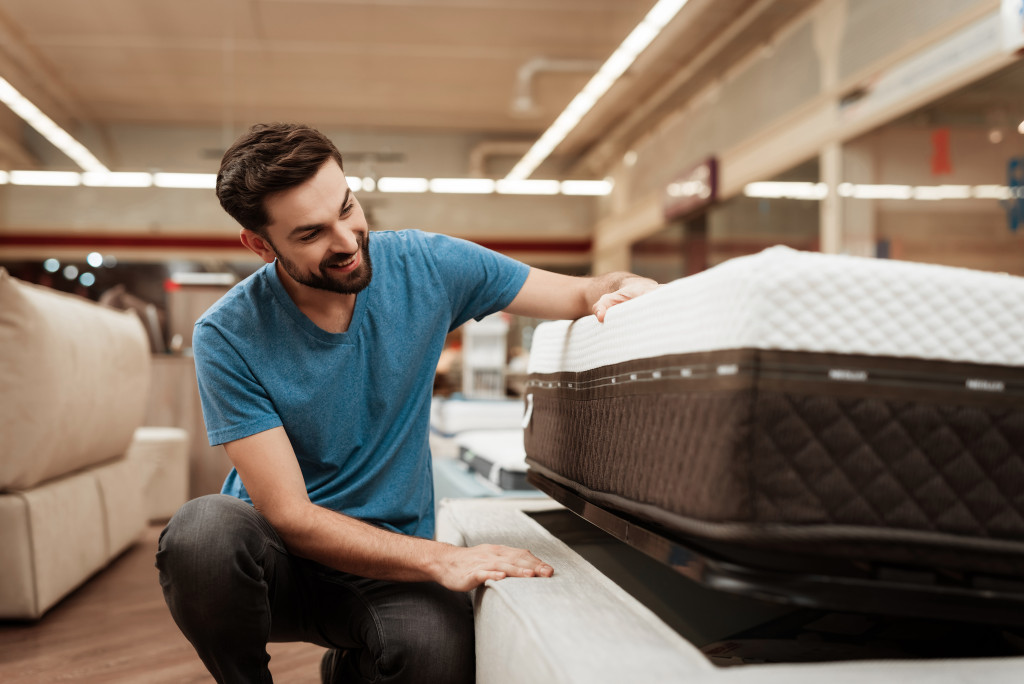Dealing with seasonal allergies is a feat in and of itself. But if you suffer from hay fever and other allergies all year round, it’s time to put away the Benadryl and focus on making your home less prone to allergens.
Whether you’re allergic to mold, pet dander, dust, or pollen, these allergy-proofing tips provide a holistic way to protect you from all sorts of allergens:
1. Use dust-mite-proof covers
Pillows, mattresses, and box springs accumulate all sorts of allergens at any given time, especially if you don’t change the covers frequently enough or let your pets sleep in the bed with you. Two ways to avoid getting allergens all over your bed are changing your sheets frequently and avoiding letting your pets on the bed. But if you are particularly allergic to dust mites, you’d also benefit from using dust-mite-proof covers on your bed and pillows, including decorative pillows.
2. Limit rugs and carpets
If you have wall-to-wall carpeting, consider removing it to reduce the number of allergens that circulate your home. Carpets tend to trap all sorts of dirt, dust, and even mold over time. And without frequent vacuuming and shampooing, they likely are the number one source of allergens inside your home.
That said, limit the number of rugs and carpets that you have inside your home. Use carpets that are easy to clean, like high-quality Westex carpets, or use area rugs instead. Either way, it is highly important that you vacuum your carpets and rugs at least once a week to minimize the allergens that they collect.
3. Choose light curtains
Heavy curtains and drapes tend to collect more dust, pollen, pet dander, and other allergens than window coverings that are made from lighter material. Choose light curtains instead that are easy to wash and are made from plain cotton or synthetic fabric. Alternatively, you can also install blinds with washable shades.
4. Use HEPA filters
If you are prone to allergies, using a HEPA filter can make the air inside your home cleaner and easier to breathe. Furthermore, it increases your indoor air quality, which can also help limit the dust that coats the surfaces inside your home and prevent mold growth.
In addition to using HEPA filters, be sure to change them at least once every three months. If you have pets or use your air conditioner frequently, you might have to change them more regularly, say, once every month.
5. Replace upholstered furniture

If you have upholstered sofas and armchairs, consider replacing them with furniture made from leather, plastic, or wood. Not only are non-upholstered furniture more hypoallergenic, but they are also easier to clean and less prone to permanent damage.
6. Limit plants
Plants can help increase the air quality inside your home, but not by a lot. Moreover, they collect dust and might even contribute to mold growth, which can make your home more prone to allergens.
With that in mind, limit the number of plants inside your home. Avoid flowering plants (e.g., orchids, spider plants) as well if you are allergic to pollen. Furthermore, make it a habit to clean the leaves of your plants regularly to remove dust.
7. Improve ventilation
Proper ventilation is essential in avoiding mold inside the house and limiting the number of allergens that float around the air. To improve the ventilation inside your home, install and use a vented exhaust fan in the kitchen to reduce moisture and cooking fumes in the air. Use an exhaust fan in the bathrooms as well to avoid mold and drive waste particles out of the house.
Opening the windows and pointing a fan outside is also a great way to increase ventilation, but if you are allergic to pollen, leaving the windows open for an extended amount of time can do more harm than good.
8. Address leaks and other moisture issues
Aside from causing mold, moisture problems can also lead to the structural decline of your home. To avoid both of these problems, address all moisture problems as soon as possible, including leaks, damp areas, moldy pipes, and water-damaged flooring.
9. Use a dehumidifier
Sometimes, getting rid of moisture problems in your home is not enough to reduce the humidity indoors. If this is the case for you, invest in a dehumidifier to get rid of excess moisture in the air and improve the quality of your sleep.
Conclusion
Living in an allergen-infested home is bound to make anyone miserable. If you don’t want to spend most of your time cycling your allergy meds, use these tips to make your home more allergy-proof.



